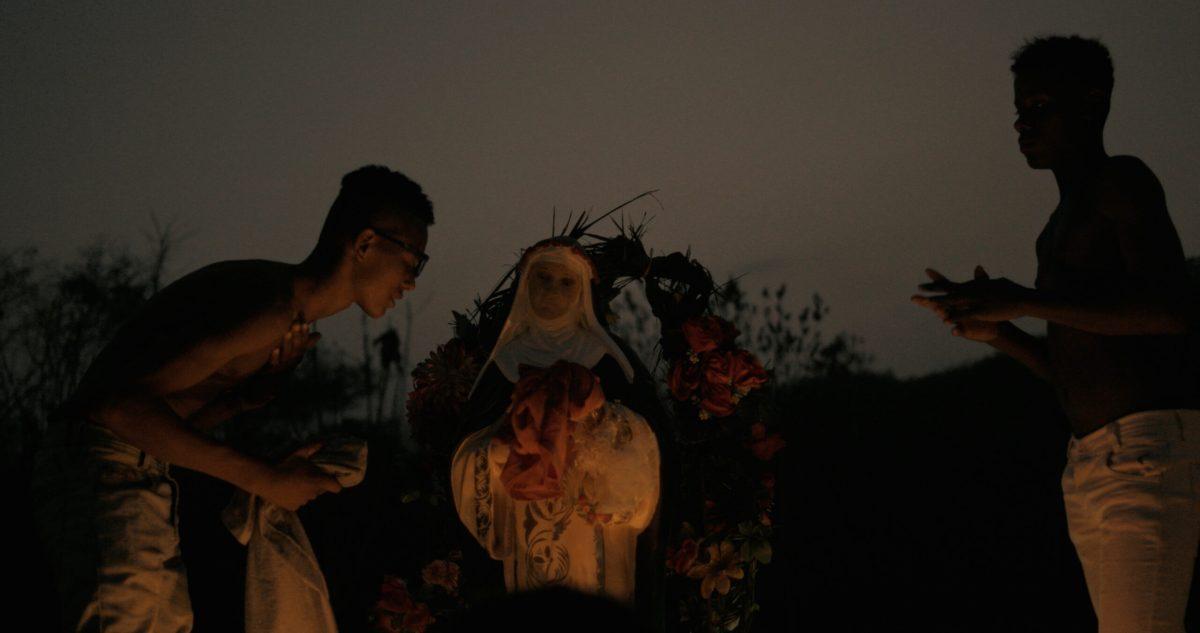
Telling the story of an Afro Colombian family’s journey to their homeland, directors Sebastián Pinzón Silva and Canela Reyes take viewers on a march through time much deeper than a simple rebirth story.
Home is much more than a place of origin — it is a place of friendship, culture, rituals and self-growth. Even when home is stolen, the memories of it persevere.
“La Bonga,” directed by Sebastián Pinzón Silva and Canela Reyes, tells just that story. A civil war between far-right paramilitary and far-left guerilla groups stripped the Afro Colombian village of La Bonga away from its inhabitants. However, this infighting does not stop central subject Maria de los Santos from wanting her children to know about their history and organizing a caravan back to their now depleted village.
Beginning with an anecdote about La Bonga’s sudden desertion — a forced 48-hour exit by far-right enforcers — I was expecting a complete story of rebirth in the film, a torn-apart village renewed to its former glory. Though no part of the village was fully rebuilt, the film was mesmerizing in ways a simple redemption narrative could not achieve, placing an emphasis on nature and simple memories.
No usable structures remained, but the emotional connection between de los Santos’ tribe and its village is powerfully evident. The film is structured as a visual diary with wide shots of the tribe navigating through difficult terrains and tight shots zooming in on the nature around them as they share delightful stories of their homeland. Viewers are immersed in the memories shared and the villagers’ precise knowledge of specific locations along the journey, even in the overgrown wilderness. In one scene, an older man pushes aside clumps of tall grass to reveal the exact spot his home used to be — in another scene, a teacher in the village’s old schoolhouse reminisces on her students’ lack of ability to get an education past middle school.
Though a protagonist in de los Santos does exist, the film made every character central to the story. Focusing on the memories and traditions of the Bongueros, the film constantly changes gears from these louder, larger group scenes of people along the journey to more serene and individualized shots that allow us to take a peek into what their lives once looked like.
However, in a nation ravaged by conflict, the fight for traditional education is not nearly as pertinent as the fight for cultural preservation and togetherness of the nation’s unacknowledged and displaced people. Upon making it to La Bonga, the Bongueros’ first priority is to regain the collective good spirit stolen by years of turmoil.
Another extended scene shows the overgrown nature that has taken over the village being burned down to reveal an empty plot of land. There are no scenes of people performing treacherous tasks to get the village back to where it used to be — instead, a massive party takes place, displaying togetherness and an intense will to relive the memories rather than trying to recapture them.
Again, in this part of the film we see constant switches in pace — from the larger group partying until the sun comes up, to a point-of-view shot of an individual searching for the entity of the patron saint of the village, Santa Rosa de Lima, who gave them the strength to return to the place they were removed from.
The film ended as soon as I thought we were getting deeper into the arc of rebirth. An extended point-of-view shot of de los Santos rebuilding the structure of her home brings viewers to the conclusion, unable to see much of the tribe’s rebuilding efforts or their aftermath.
However, the simple presence of the structures in this village are not as important as the memories held within it. Destroyed by extremists and taken over by nature, the collective strength of the villagers and their willingness to stick together is what kept the village alive.
Edited by Scout Hudson | [email protected]
Copy edited by Grace Knight